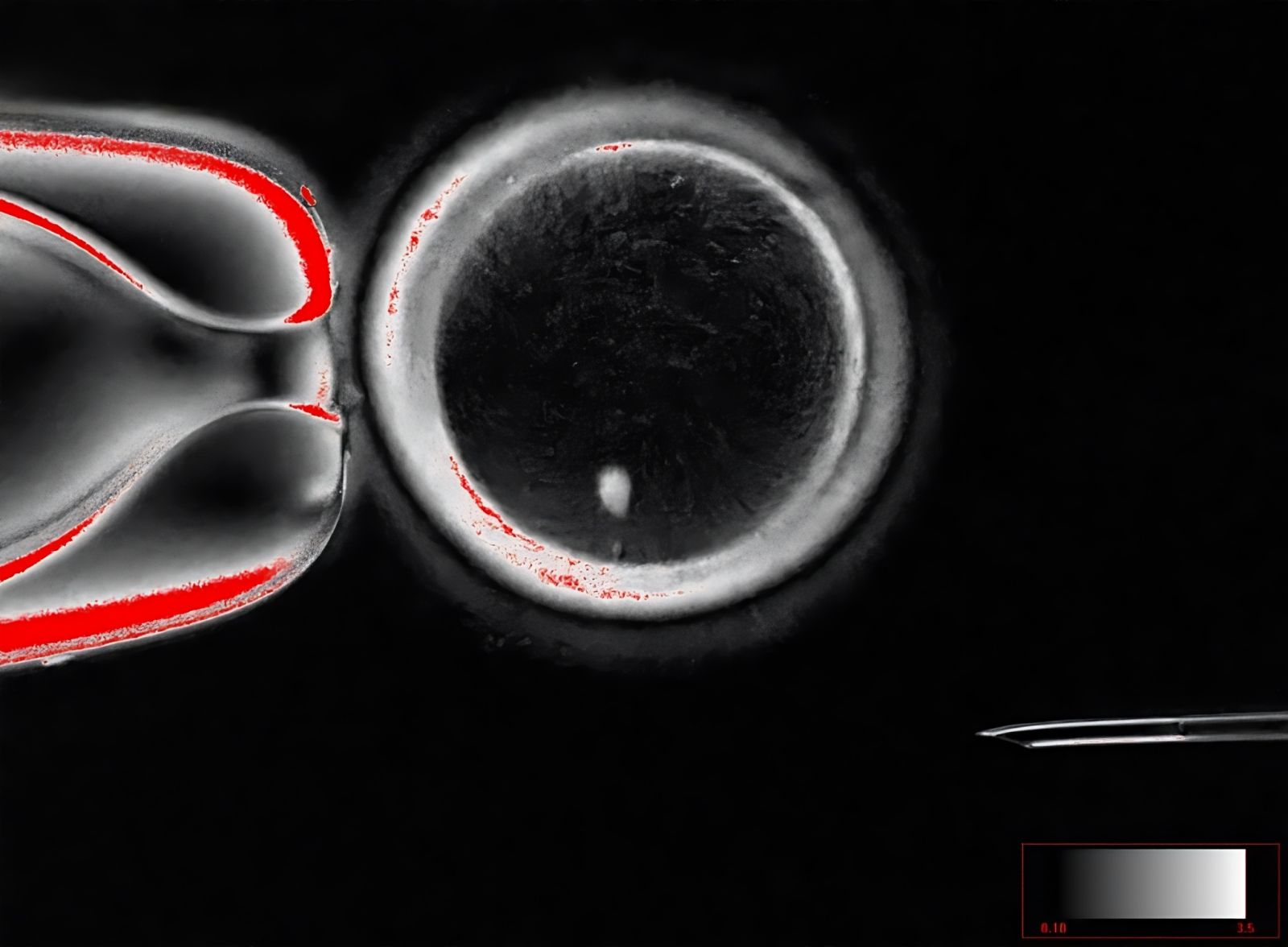🧬 Transforming skin cells into eggs: hope for infertile or same-sex couples
Published by Cédric,
Article author: Cédric DEPOND
Source: Nature Communications
Other Languages: FR, DE, ES, PT
Article author: Cédric DEPOND
Source: Nature Communications
Other Languages: FR, DE, ES, PT
Follow us on Google News (click on ☆)
Infertility affects a significant portion of the world's population and often results from the inability to produce functional gametes. In women, ovarian aging or certain medical treatments can drastically reduce the number and quality of oocytes, making conventional in vitro fertilization ineffective. Scientists have therefore explored alternative strategies, including reprogramming somatic cells to transform them into viable gametes. Their approach is based on a concept called "mitomeiosis," an unprecedented blend of natural cell division processes.

Researchers at OHSU have developed a new technique to treat infertility by transforming skin cells into oocytes, or eggs. The image shows an oocyte with a clear image of the nucleus of a skin cell before fertilization.
Credit: Oregon Health & Science University
A new method to create eggs
To create functional eggs, researchers first removed the nucleus from a human oocyte and replaced it with that of a skin cell. Somatic cells possess a double set of chromosomes, making them incompatible with normal fertilization. The challenge was therefore to reduce this double set to a single set of chromosomes, similar to what meiosis naturally accomplishes in eggs. In response, the team developed mitomeiosis, a mechanism that combines known cell divisions to obtain a haploid egg capable of fusing with a sperm cell.
This process enabled the creation of 82 functional oocytes. When fertilized, the majority did not progress beyond the early stages of development, often due to chromosomal abnormalities. However, a small fraction (9%) reached the blastocyst stage, showing that chromosome assembly and fertilization can work under certain conditions. These results confirm that mitomeiosis is a viable concept, even if its stable and safe reproduction in humans still requires many years of research.
The implications of this technique are multiple. It could offer an option for women with insufficient ovarian reserve, or for same-sex couples wishing to have a child genetically related to both partners. Nevertheless, the biological complexity and ethical risks demand extreme caution before any clinical application. Researchers emphasize that this is currently a scientific trial and not a method applicable to humans.
Scientific perspectives and challenges
Mitomeiosis could transform research on in vitro gametogenesis by offering an alternative to the long and complex methods based on pluripotent stem cells. By adapting techniques from cloning, scientists have managed to bypass some major obstacles to creating gametes from somatic cells. This approach could also serve as a model to better understand chromosome division and the causes of genetic abnormalities in human embryos.
Furthermore, the results show that it remains essential to master the chromosome reduction process to obtain stable and fertile eggs. The observed abnormalities, common even in natural oocytes, highlight the complexity of reproducing human meiosis in the laboratory. Future research will therefore need to focus on securing this critical step to increase the rate of viable blastocysts.
Finally, the study raises ethical and regulatory questions. Clinical applications are still far off and require strict oversight, particularly to protect embryos and avoid premature genetic manipulations. Despite these constraints, the work constitutes an important scientific milestone and could, in the long term, offer new options to patients facing the most severe infertility.
To go further: how does mitomeiosis work?
Mitomeiosis combines two fundamental biological processes. It borrows elements from mitosis, the classic division of body cells. It also integrates characteristics of meiosis, reserved for the formation of gametes. This fusion creates a third pathway of cell division.
The process begins with the transfer of a skin cell nucleus into an empty egg. The cytoplasm of this egg then triggers a unique cellular rearrangement. The chromosomes of the implanted nucleus align as for a classic division, but without duplicating beforehand. This preparatory step is essential for the subsequent operations.
The division results in the formation of an egg containing only twenty-three chromosomes. This result artificially reproduces the natural chromosomal reduction of gametes. The egg thus created can then be fertilized by a sperm cell, allowing the formation of an embryo with the genetic heritage of both parents.